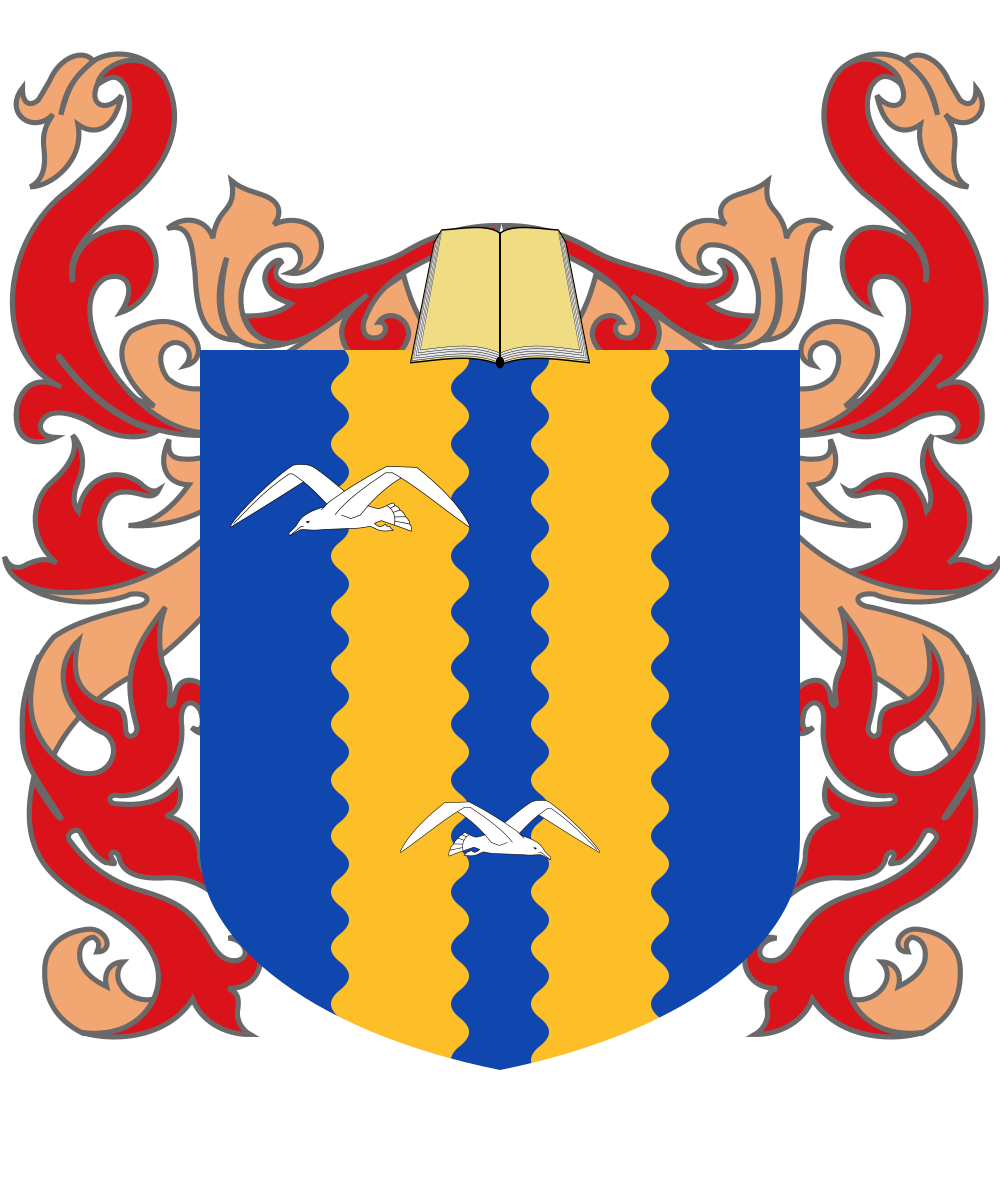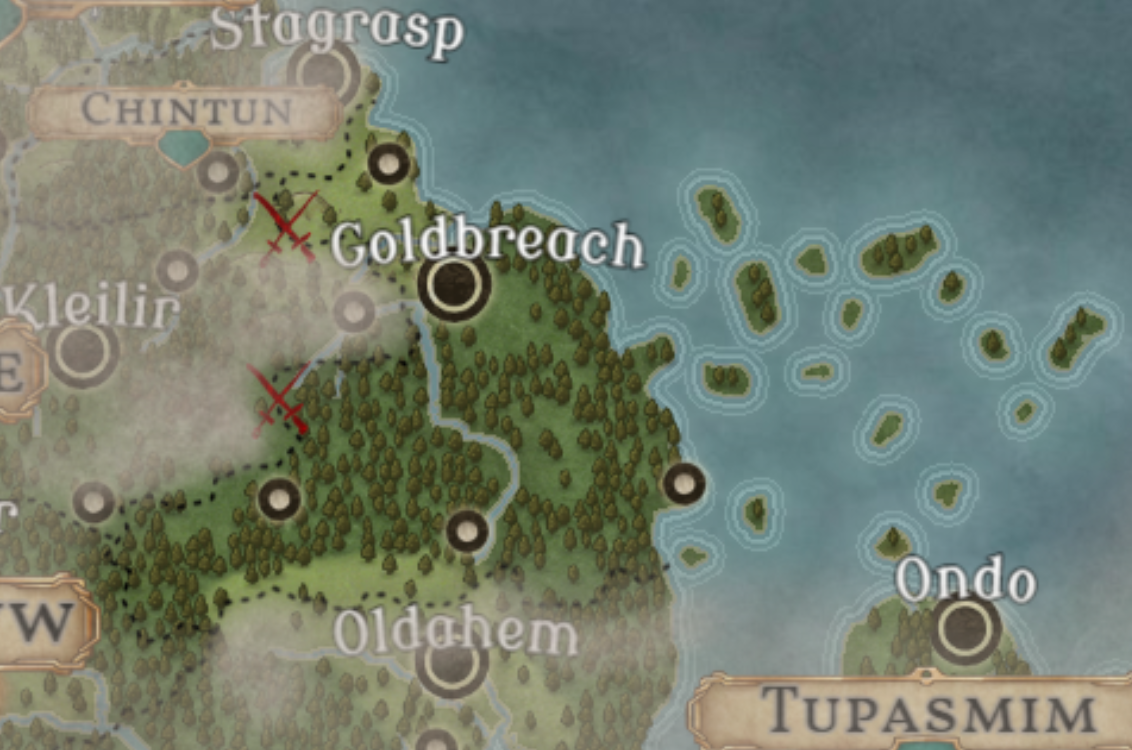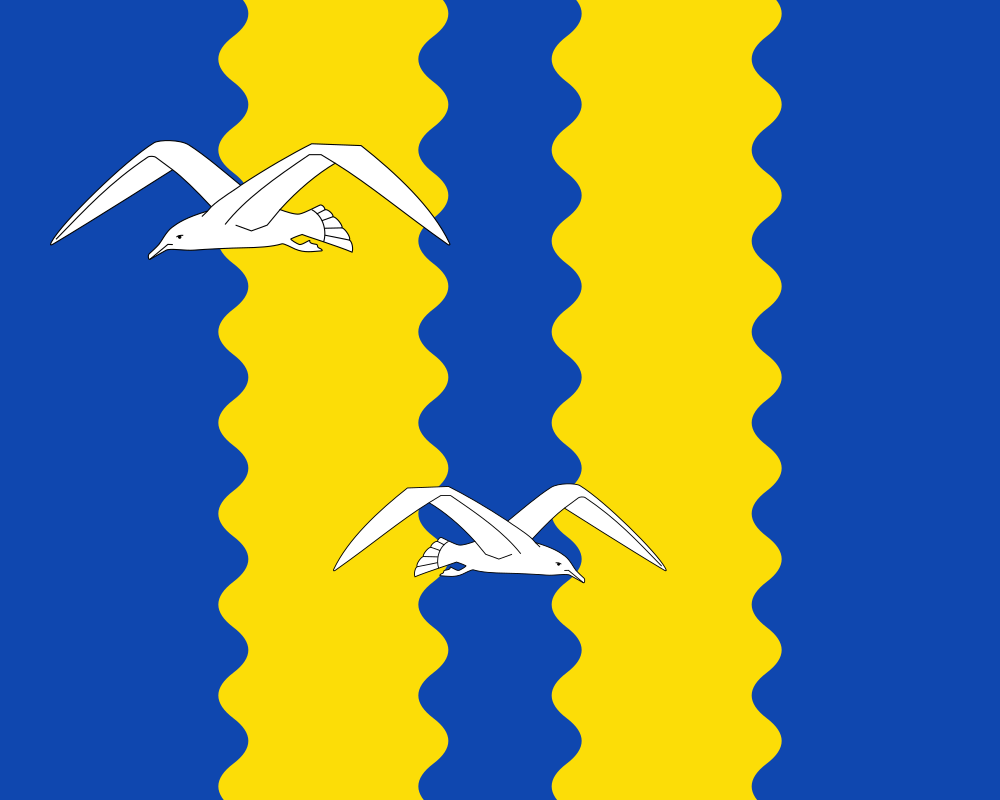Anyisyow
Anyisyow, officially the Anyisyow Republic, is located on the eastern coast of the continent and counts many islands spreading into the Chanîk Sea. The capital, Goldbreach, is settled on the Dralemide River. Further north is the city of Roveverc, close to Chintuni border. The city of Wulun is located on the south-eastern coast, while Newell is the first trading city with the capital of Utukchayw. Serving as the base for the army, Clifront is very dependent on supply from their southern neighbours, while the city of Ziavir located near the capital, has been lost to Sotemi conquest.
The Anyisyowi are people who are very proud of their knowledge, which allowed them to create steam engines before any other nation. This innovation is still relatively recent, dating from the annexation of the ancient kingdom of Uminmayow (‘Wasted Coast’). Following this great expansion, the Anyisyowi industry took off, particularly from the eastern islands where the raw materials are produced to sustain the continent.
This sudden rise in mondial importance caused the start of a conflict with the Empire of Sotem, concentrated in the Ziavir region, a little west of the capital, and the Clifront region, in the south west. Anyisyowi folk are also beginning to worry about the immigration of Tupsamim refugees on the east coast.
Government
Political decisions are taken by a small group of people, which are distinguished by their talent or abilities. Every three years is held the Council Exam, its role being to find new talented individuals to join the Council. Therefore, members of the Council are only elected for three years, unless no one has come up with a significant enough invention in a specific field, in which case the Council member remains in position until the next Council Exam when their position is challenged once again. By using this system of challenging the position of Council members every three years, Anyisyowi industry has quickly become the leading industry on the continent.
The societal system is settled on feudal relationships, meaning that land owners allow workers to settle on their land in exchange for constant and continuous work. On top of that, workers are also required to pay certain taxes, which can be done in labour or cash. Labour payment would entail maintenance of common parts such as roads or bridges, or performing services either for the community or for the land owner directly. Thus, land owners are the true masters of all the elements that are under their jurisdiction, the use of them entailing the payement of a tax. As they own the land, houses build on it are by extention, theirs as well.
In summary, territories are cultivated by workers who produce for the land owner and for themselves. Therefore, the economy of Anyisyow is entirely circular and absolutely self-enclosed.
Fashion and society
The most common weapons of the armed forces are crossbows, straight swords and prototype rifles. They wear a specific jacket over their civilian outfit, which makes them easily recongnizable. Their ceremonial outfit is similar to the Napoleonic uniform, with black boots or gaiters, white trousers that are fitted on the abdomen, a black shirt or coat with red and gold cuffs and collar as well as epaulettes and ten gold front buttons. Aside from being worn during parades or ceremonies, they can also be seen during the entire Council Exam. Hair is not required to be cut, but soldiers must ensure that it won't bother them, thus most long-haired active soldiers opt for tight braids or low ponytails tucked inside the collar of their uniform or inside their hat.
Wealthy citizens typically wear a suit which includes a shirt and a pair of trousers, topped with a coat. The length of the coat is a great indicator of social status, very few can afford a knee-length coat as it requires way more fabric. Ladies' dresses and skirts are less than forty centimetres in diameter, meaning around twenty centimeters away from the body. The shape is maintained by the use of crinolines instead of petticoats. High waisted dresses sitting right below the chest are a staple in a lady's wardrobe, special attention is given to details, fabric and colours to stand out from the crowd. In a fashion similar to men, only those with significant wealth don larger pieces, the extra fabric indicating the status of the wearer, both economic and geographic.
The wealthier individuals are most commonly found wearing hats, and have longer, wider and more colourful pieces. Such choice is influenced not only by the fact these people do not need to prioritize ease of movement as they are not required to work, but also by the fact that their environment is much less tight and crampted than the working class, allowing for more space to display their wealth.
Working class, on the other hand, are easily identified by their duller garnments, often gray, brown, black, off white or dark green or blue. A fashion paradox is rampant among this class, as survival heavily relies on speed and agility it implies wearing few layers, but by doing so, exposing oneself to the low temperatures of working areas. Adding more layers to fight the cold would then mean compromizing one's movement and inherent survival. Therefore, shorts and pants suggest a low-level job that requires free movement or running.
Dirt and soot are linked to miners and chimney sweepers, two of the lowest level jobs as they are poorly paid, poorly insured, poorly viewed and very dangerous. Yet, the possibility of discovering an abudant mining vein still attracts a lot of unqualified workers, which feeds the narrative that workers are inherently greedy and delusional. Most people who value their social position, no matter how low it is, prefer to find jobs in the domain of machinery, inventing, designing, caretaking and house maintenance. These latters, not only offering a better social position in comparison, are also much less dangerous and, more importantly, are more likely to lead to a transfer to an area closer to the Surface.
The Surface describes all the areas at ground level to Anyisyowi people, in opposition with the Pits, which are the areas underground. As society relies heavily on the recently invented steam engine and coal as its main combustible, workers have been mining deeper and deeper over the years, initially searching for precious stones. Over time, land owners have started to make workers settle closer and closer to mining zones to increase benefit, building small towns deeper and deeper inside the ever-increasing pits. From this separation between workers and land owners was born a new beauty standard: tanned skin is seen as desirable, as it implies prolonged exposure to sunlight, which is more abundant on the Surface.
Republic of Anyisyow
From the waves we rose
Capital: Goldbreach
Religion: Nandenor Faith
Demonym: Anyisyowi
Government: Feudal meritocracy
Linguistic
IPA transcription
/aˈnjisjow/
Pronounciation
[ a.NYI.syow ]
Meaning
"Wavy Coast"
Etymology
From Chîkise, combination of the noun-to-adjective prefix any- + -is ("wave") + -yow ("coast")





